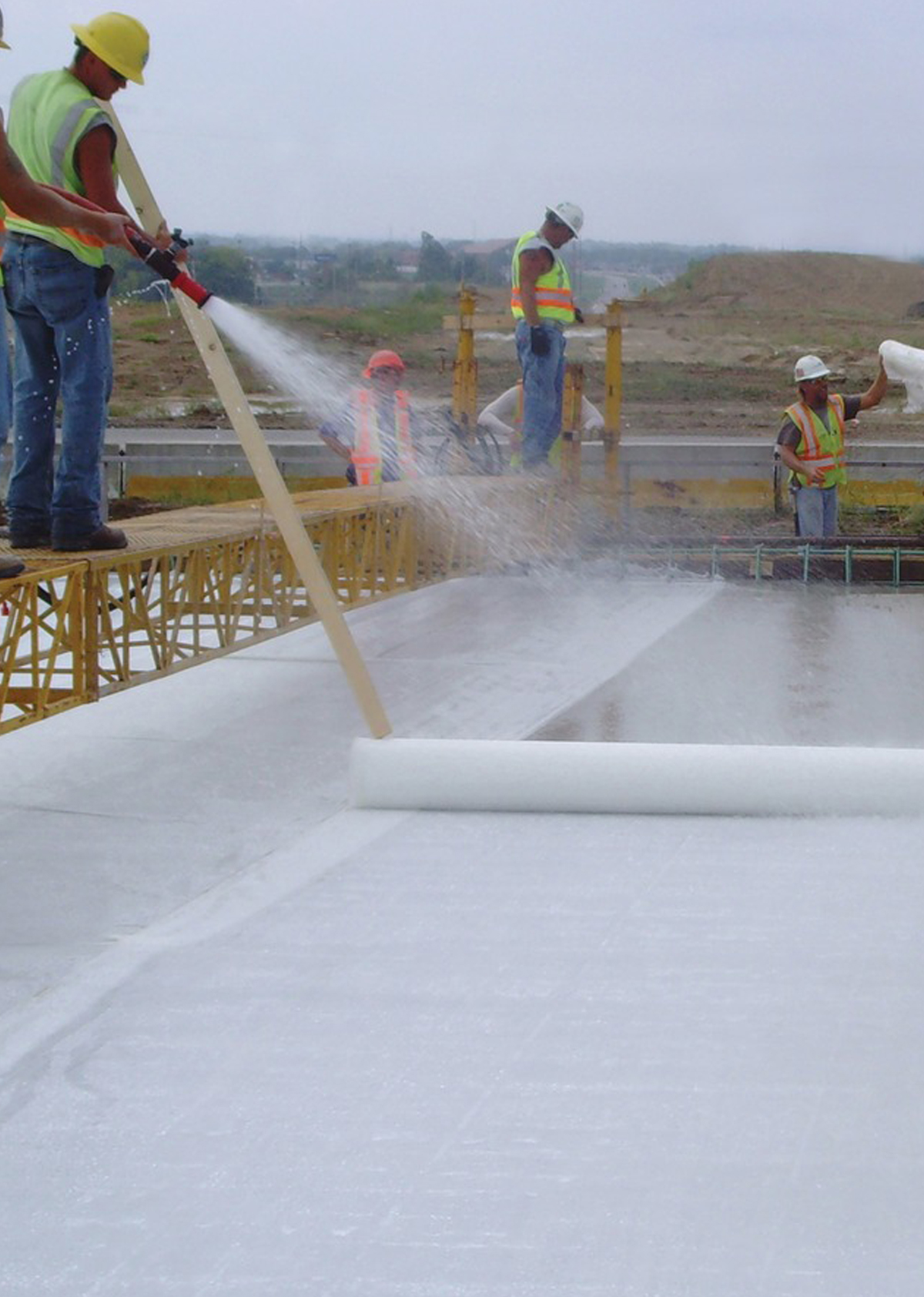
Curing of concrete – an introduction
Presence of water is important to complete chemical reaction between cement and water. The setting and hardening of concrete largely depends on presence of water for hydration process. While mixing the required quantity of water is generally added to concrete ingredient and theoretically no additional water is required. However water losses takes place due to various factors and hence to help in hydration process and further moisture loss, curing is required. Though curing is quite important activity as it is related to strength gain, many times it is observed that the due importance is not given to curing. Hydration of concrete is very rapid in early few days after concreting, it is important to retain water added or required for hydration process. Various important properties of concrete like durability, strength depends on cuing. Also curing helps in reducing shrinkage cracks resulting in improvement in durability. Water used for curing should be free from harmful chemicals, oil etc. Generally potable water is considered satisfactory for curing. If mineral add mixtures or blended cement is used the curing period should be extended for at least 10 days. Further it is recommended to extend the period of curing for 14 days if mineral add mixtures or blended cement is used. Methods of Curing: Curing process generally can be achieved by either 1. Keping the exposed concrete surface moist – this method is widely adopted in Indian construction industry due to simplicity and good quantity of water availability. This method includes ponding, sprinkling of water, wet coving with gunny bags etc. 2. Sealing the expose surface so that loss of moisture can not take place. – This method includes covering the exposed concrete surface with chemicals, plastic sheet, etc. This method is costlier than previous one and required expert supervision. Accelerated Curing: Sometimes we require to accelerate the curing process to attain the early strength gain of concrete. Typically this is required to simulate 14 or 28 days concrete cube results in quite early. This can be achieved by applying steam, heating pads etc.
Period of Curing
Exposed concrete surface shall be kept moist for the period of at least 7 days in case of only OPC used from date of casting.
Selection of Curing method:
as there are several methods for curing, selection of right method is very important. Some of the basic parameter for selection of curing method are listed below
- Cost of activity
- Availability of resources i.e. material, manpower etc.
- Tender specifications
- Shape and size of structure.
Total Immersion in the water:
The most effective way of curing is total immersion in the water. However this method is not practical due to size and shape of structure. This method is widely adopted for curing of concrete test cubes, small precast members. Ponding: This method is applied for horizontal member or for members which are casted in slight slopes. The common example of this type of curing is seen for slabs, road pavements etc. To achieve this, mortar bunds (low strength cement: sand ration of 1:8 to 1:10) of height about 50 to 75 mm (ensure water depth at least 25 mm above exposed surface) constructed around the perimeter of the structure. After hardening water is poured in the portion so as to flood the exposed surface completely. Following precautionary measures should be adopted. 1. Check the exposed surface is fully flooded as there are water losses due to evaporation in hot season. Periodic pouring of extra water is required 2. Try to construct mortar bund as near as possible to edge to achieve complete exposed surface coverage. However if it not possible to construct bund near surface, laying gunny gabs and keeping the bags moist with water sprinkling should be done.
Spraying of water:
This method can be adopted for both horizontal and vertical member. The only constraint is availability of ample and continuous water supply. This method is widely used for vertical members of large area i.e. cement plaster surface of walls. Strict supervision is required to ensure the exposed surface is kept moist during curing period.
Moist Fabric Covers:
This method is generally adopted for vertical members having small perimeter typically for columns and RCC walls. Hassian or similar type material is wrapped around the exposed surface and water is sprinkled over it to keep the hassian cloth moist. Covering the exposed surface with gunny bags, hassian cloths helps in retaining moisture for longer time and hence continuous sprinkling of water not required. However periodic supervision required ensuring wrapping material is kept moist throughout curing period. Materials such as gunny bars, hassian cloth, rugs, cotton mats, burlaps may be used as wrapper.
Curing Compound:
curing compound basically forms a thin layer of barrier which prevents loss of moisture from exposed surface. This method is not typically adopted for day to day process of normal construction projects such as residential housing. It is costlier than the methods mentioned above and required skilled labour and supervision.
Defects due to insufficient Curing :
Typically now days 53 grade cements is used in almost all construct activities. As 53 grade cement is fine which results in to early and high strength gain. Due to this it is also important to avoid loss of moisture in early period to complete hydration process. In summer season rapid loss of moisture due to evaporation observed resulting shrinkage cracks. Due to this percent defects in structure like leakages, less durability, bad appearance takes place.
Content retrieved from: http://www.probcguide.com/civil-works/plain-and-reinforced-concrete/curing-of-concrete-2/.

